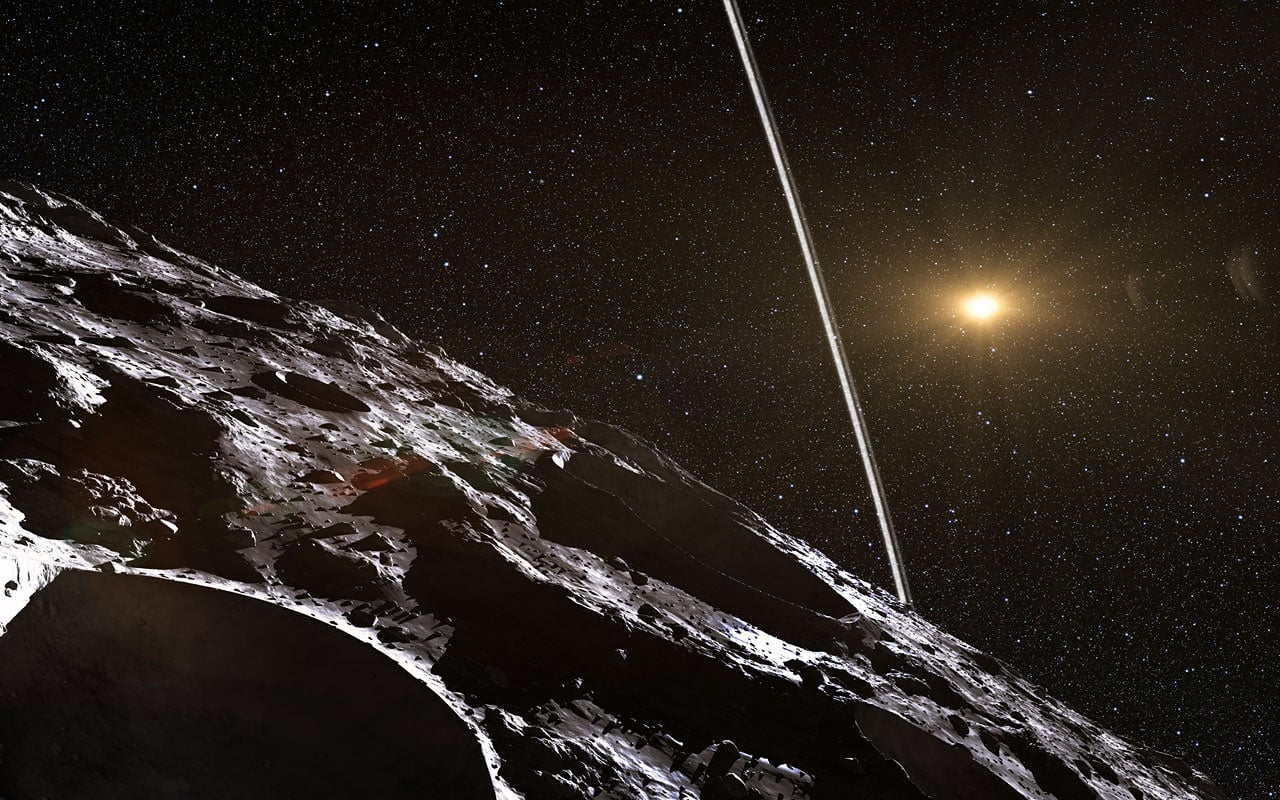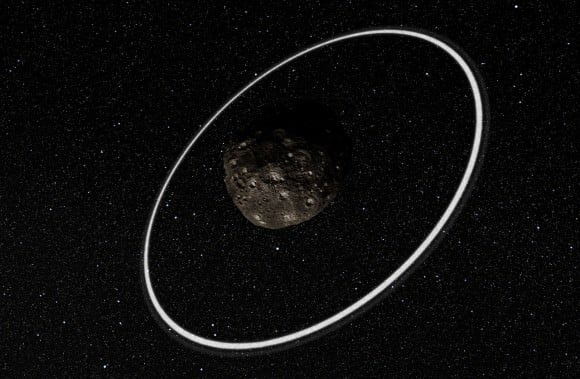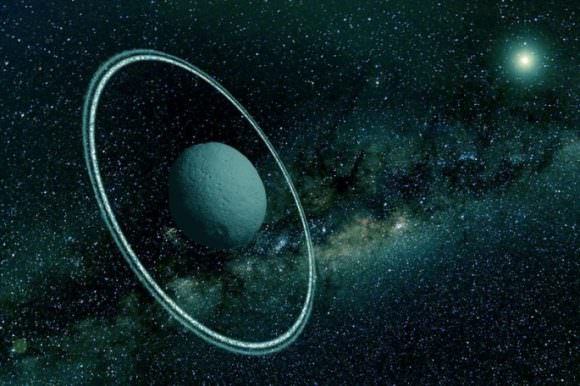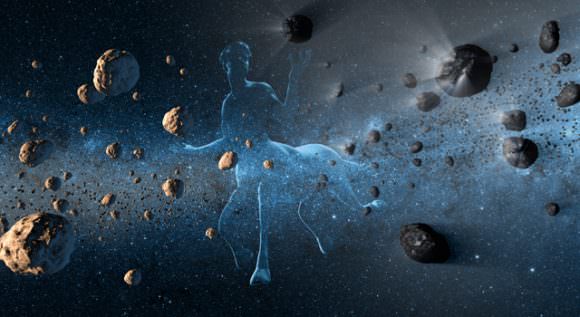When we think of ring systems, what naturally comes to mind are planets like Saturn. It's beautiful rings are certainly the most well known, but they are not the only planet in our Solar System to have them. As the
Voyager
missions demonstrated, every planet in the outer Solar System - from Jupiter to Neptune - has its own system of rings. And in recent years, astronomers have discovered that even certain minor planets - like the Centaur asteroids
10199 Chariklo
and
2006 Chiron
- have them too.
This was a rather surprising find, since these objects have such chaotic orbits. Given that their paths through the Solar System are frequently altered by the powerful gravity of gas giants, astronomers have naturally wondered how a minor planet could retain a system of rings. But thanks to a team of researchers from the Sao Paulo State University in Brazil, we may be close to answering that question.
In a study titled "
The Rings of Chariklo Under Close Encounters With The Giant Planets
", which appeared recently in
The Astrophysical Journal
, they explained how they constructed a model of the Solar System that incorporated 729 simulated objects. All of these objects were the same size as Chariklo and had their own system of rings. They then went about the process of examining how interacting with gas giant effected them.
[caption id="attachment_110724" align="aligncenter" width="580"]
Artist's impression of rings around the Centaur Chariklo, the first asteroid where rings were discovered. Credit: ESO/L. Calçada/M. Kornmesser/Nick Risinger (skysurvey.org)
[/caption]
To break it down, Centaurs are a population of objects within our Solar System that behave as both comets and asteroids (hence why they are named after the hybrid beasts of Greek mythology). 10199 Chariklo is the largest
known
member of the
Cent
aur population, a possible former Trans-Neptunian Object (TNO) which
currently orbits
betwee
n Sat
urn
and
Ura
nus
.
The rings around this asteroid were first noticed in 2013 when the asteroid underwent a stellar occultation. This revealed a system of two rings, with a radius of 391 and 405 km and widths of about 7 km 3 km, respectively. The absorption features of the rings showed that they were partially composed of water ice. In this respect, they were much like the rings of Jupiter, Saturn, Uranus and the other gas giants, which are composed largely of water ice and dust.
This was followed by findings made in 2015 that indicated that 2006 Chiron - another major Centaur - could have a ring of its own. This led to further speculation that there might be many minor planets in our Solar System that have a system of rings. Naturally, this was a bit perplexing to astronomers, since rings are fragile structures that were thought to be exclusive to the gas giants of our System.
As Professor Othon Winter, the lead researcher of the Sao Paulo team, told Universe Today via email:
"At first it was a surprise to find a Centaur with rings, since the Centaurs have chaotic orbits wandering between the giant planets and having frequent close encounters with them. However, we have shown that in most of the cases the ring system can survive all the close encounters with the giant planets. Therefore, Centaurs with rings might be much more common than we thought before."
[caption id="attachment_129556" align="aligncenter" width="580"]
Artist's impression of Chiron, showing a possible ring system. Credit: dailygalaxy.com
[/caption]
For the sake of their study, Winter and his colleagues considered the orbits of 729 simulated clones of Chariklo as they orbited the Sun over the course of 100 million years. From this, Winter and his colleagues found that each Centaur averaged about 150 close encounters with a gas giant, within one Hill radius of the planet in question. As Winter described it:
In the end, the simulations showed that in 90 percent of the cases, the rings of the Centaurs survived their close encounters with gas giants, whereas they were disturbed in 4 percent of cases, and were stripped away only 3 percent of the time. Thus, they concluded that if there is an efficient mechanism that creates the rings, then it is strong enough to let Centaurs keep them.
[caption id="attachment_129557" align="aligncenter" width="580"]
Due to their dual nature, the name Centaur has stuck when referring to objects that act as both comets and asteroids. Credit: jpl.nasa.gov
[/caption]
More than that, their research would seem to indicate that what was considered unique to certain planetary bodies may actually be more commonplace. "It reveals that our Solar System is complex not just as whole or for large bodies," said Winter, "but even small bodies may show complex structures and even more complex temporal evolution."
The next step for the research team is to study ring formation, which could show that they in fact picking them up from the gas giants themselves. But regardless of where they come from, its becoming increasingly clear that Centaurs like 10199 Chariklo are not alone. What's more, they aren't giving up their rings anytime soon!
Further Reading: iopscience.iop.org
 Universe Today
Universe Today



